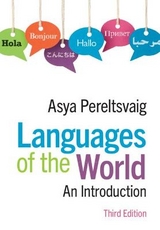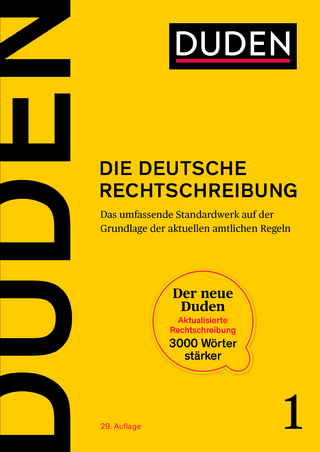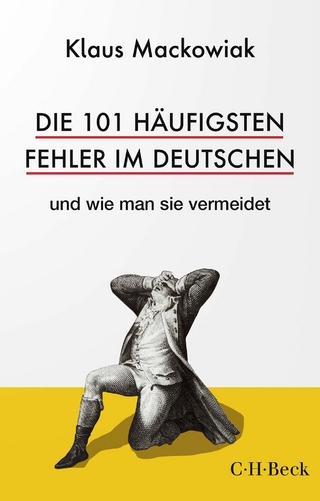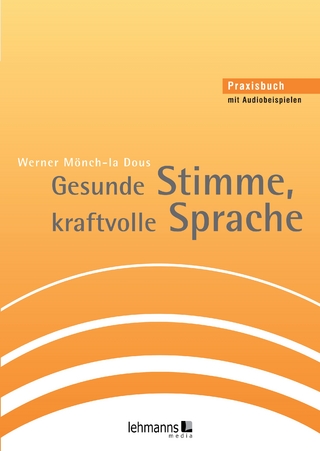
Languages of the World
Cambridge University Press (Verlag)
978-1-316-62196-7 (ISBN)
- Titel erscheint in neuer Auflage
- Artikel merken
What do all human languages have in common and in what ways are they different? How can language be used to trace different peoples and their past? Assuming no prior knowledge of linguistics, the new edition of this engaging textbook introduces readers to the rich diversity of human languages, familiarizing students with the variety and typology of languages around the world. Linguistic terms and concepts are explained, in the text and in the glossary, and illustrated with simple, accessible examples. Numerous language family charts enable students to place a language geographically or genealogically. Updated and revised throughout, the second edition includes two new chapters and new pedagogical features, such as 'Advanced' sections, textboxes and 'Did you know?' boxes. Important websites are integrated into the text, and each chapter includes a 'Do it yourself' section, comprising assignments, questions and problem sets. Supplementary online resources include illustrations, key term flashcards and useful links. This introduction is an essential resource for undergraduate courses on language typology, historical linguistics and general linguistics.
Asya Pereltsvaig is an independent scholar, and was most recently a lecturer in the Department of Linguistics at Stanford University, California.
Acknowledgements; Abbreviations used in the glosses; 1. Introduction: 1.1. Languages, dialects, and accents; 1.2. Language families; 1.3. Linguistic diversity; 1.4. Focus on: how do languages diversify?; 2. Languages of Europe: 2.1. Indo-European Languages; 2.2. Discovery of the Indo-European family and comparative reconstruction; 2.3. The Indo-European controversy; 2.4. Non- Indo-European languages of Europe: 2.4.1. Basque; 2.5. Focus on: endangered languages of Europe; 3. Languages of Iran and South Asia: 3.1. Indo-European languages of Iran and South Asia: 3.1.1. Iranian languages; 3.1.2. Indo-Aryan languages; 3.2. Dravidian languages; 3.3. Other languages of India; 3.4. Focus on: universals and the Parametric theory of language; 4. Languages of Northern Eurasia: 4.1. Finno-Ugric languages; 4.2. Other Uralic languages; 4.3. Other languages of Siberia; 4.4. Russian-based pidgins of Siberia; 4.5. Focus on: evidential markers in Yukaghir languages; 5. Languages of the Caucasus: 5.1. Northwest Caucasian languages; 5.2. Northeast Caucasian languages; 5.3. Kartvelian languages; 5.4. Indo-European languages in the Caucasus; 5.5. Focus on: field Linguistics; 6. Languages of the Greater Middle East: 6.1. Turkic languages; 6.2. Afroasiatic languages: 6.2.1. Semitic languages; 6.3. Focus on: language contact; 7. Languages of Sub-Saharan Africa: 7.1. Nilo-Saharan languages; 7.2. Niger-Congo languages; 7.3. Khoisan languages; 7.4. Focus on: official languages, trade languages, and creole languages in sub-Saharan Africa; 8. Languages of Eastern Asia: 8.1. Sino-Tibetan languages; 8.2. Austro-Asiatic languages; 8.3. Tai-Kadai languages; 8.4. Japanese and Korean; 8.5. Focus on: isolating morphology and language change; 9. Languages of the South Sea Islands: 9.1. Discovery of the Austronesian family and the Austronesian Homeland; 9.2. The Austronesian realm; 9.3. The Austronesian prototype; 9.4. Focus on: the mystery of Malagasy; 10. Aboriginal Languages of Papua New Guinea and Australia: 10.1. Languages of Papua New Guinea; 10.2. Languages of Australia; 10.3. Focus on: is Dyirbal a primitive language?; 11. Native Languages of the Americas: 11.1. Languages of North America; 11.2. Languages of Meso-America; 11.3. Languages of South America; 11.4. Focus on: the Pirahã Controversy; 12. Macro Families: 12.1. Dene-Yeniseian hypothesis; 12.2. Altaic and Ural-Altaic macro-families; 12.3. The Nostratic and Eurasiatic hypotheses; 12.4. Other hypothesized macro language families; 13. Pidgins, Creoles, and Other Mixed Languages: 13.1. Pidgins; 13.2. Creoles; Glossary; Index of languages; Bibliography.
| Erscheinungsdatum | 05.09.2017 |
|---|---|
| Verlagsort | Cambridge |
| Sprache | englisch |
| Maße | 175 x 246 mm |
| Gewicht | 830 g |
| Themenwelt | Geisteswissenschaften ► Sprach- / Literaturwissenschaft ► Sprachwissenschaft |
| ISBN-10 | 1-316-62196-0 / 1316621960 |
| ISBN-13 | 978-1-316-62196-7 / 9781316621967 |
| Zustand | Neuware |
| Informationen gemäß Produktsicherheitsverordnung (GPSR) | |
| Haben Sie eine Frage zum Produkt? |
aus dem Bereich



